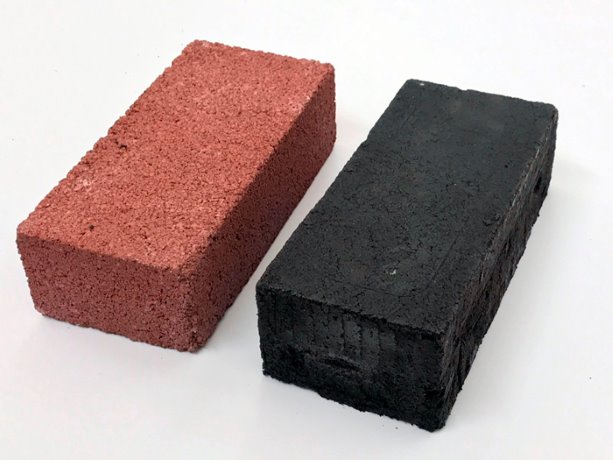Researchers at the NASA Ames Research Center in California have discovered they can make surprisingly strong bricks using a small amount of biological binding agent and simulated lunar soil.
"The addition of this protein solidified the soil simulant into a really hard, firm structure that could be used for construction purposes," says David Loftus, a medical officer with the Space Bioscience Research Branch at NASA Ames.
"We really knew we had something pretty nifty from a NASA perspective."
The go-to source for lunar soil simulant is volcanic tuff, rock made of volcanic ash found in Arizona. The protein used was a blood albumin material derived from cattle.
"The biological material was relatively inexpensive and available," says Loftus.
"We mix the protein with soil and water. The protein-water solution interacts with the soil and then as the water evaporates the mixture gradually hardens and becomes quite firm."
The researchers initially began with thimble-sized bricks and gradually worked their way up to full-scale household-sized bricks. The strength of the biological brick is about equal to a masonry brick and its compressive strength compares well to concrete at about 3,000 psi.
David Loftus
NASA Ames
The material also held up just as well as concrete under simulated micrometeorite bombardment at the Ames Vertical Gun Range, where samples were blasted with high-speed gas particles.
Loftus soon reached out to collaborate with Michael Lepech, an associate professor of civil and environmental engineering at the Stanford School of Engineering.
"He’s an expert in concrete and we really wanted to apply all of the evaluation that was appropriate for a cementitious material to this product," he says.
"We want to understand why this material is so strong and why it works so well. We’ve been co-developing this material and bringing in other collaborators on the project."
One collaborator at the National Institute of Standards and Technology has been capturing microscopic three-dimensional images of the soil grains to help unlock the secret of its strength.
Ultimately, such bricks could be used to construct buildings on the lunar surface. Better still, tests using a Mars soil simulant derived from information provided by the Mars Rover have been just as successful.
That success would allow space missions to save valuable cargo space that would otherwise have been taken up by building materials and increase payloads necessary for human survival. In the short term, the binding agent could be sent to the moon or an orbiting asteroid, for example, and used to support human settlements there.
"Our dream is to be able to produce the biological material in space using microbes that have been engineered to manufacture the biological binding agent that we need," says Loftus. "Those microbes could be nourished in a cultural medium created by the types of waste streams available from a human settlement."
Lepech notes that the current iteration of the bricks will eventually break down under heavy rain over a period of years. That’s not a problem on Mars, but the researchers are seriously looking at ways to tweak the proteins to use the bricks on Earth.
The biological brick making process significantly reduces CO2 emissions compared to masonry brick and portland cement production and eliminates the high energy consumption of baking bricks. Properly scaled, the process could make inexpensive bricks accessible to people across the world.
NASA’s new goal of sending humans to Mars by 2030 only highlights the importance of the current project.
"It’s pretty amazing," says Loftus. "We’re now having these discussions about what conditions would be like and what technologies would be useful all the time at NASA."











Recent Comments
comments for this post are closed